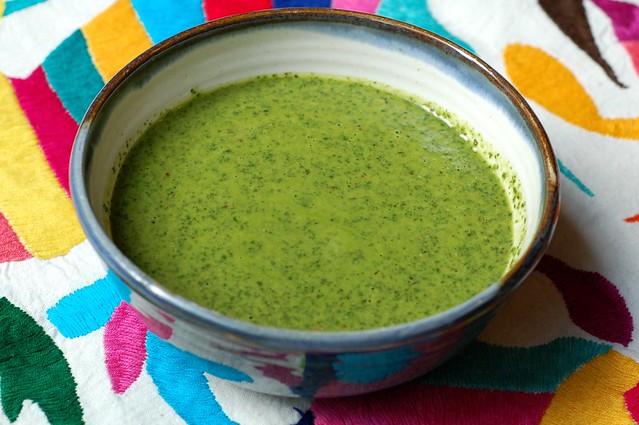A quick glance at the original date of this post confirms that I began writing about this scrumptiously fresh citrus dessert nearly two years ago, in July of 2008. I guess it's true that good things come to those who wait...
I think of this delightful sorbet as a uniquely Californian dessert, mostly because I had never heard of or seen a Meyer lemon before we moved here. But here in Berkeley, they are practically ubiquitous. (For those of you who are interested in the fruit's actual provenance, this type of lemon is originally from China.)
Our yard is graced by an outrageously abundant Meyer lemon tree. We're thoroughly mystified by its fecundity -- we never water it (which is significant since it does not rain for 6 months out of the year here), nor have we ever fertilized it, yet it churns out Meyer lemons like they were going out of style.
The tree has such a prolific presence in our yard that "memon" is one of our son, Will's first words. As soon as we take him outside, he toddles over to the tree saying "memon" over and over in a soft, delighted, little voice that he reserves for the lemons, alone. Then he picks one (there is some parental assistance involved in that process) and walks around sucking on it and biting off small pieces of the soft peel with his three little teeth.
But back to the sorbet. While the subtle, floral flavor of the Meyer lemons is uniquely lovely, you can easily substitute regular lemons or another citrus fruit if you can't find Meyers.
It turns out that sorbet is surprisingly easy to make, especially if you have an ice cream maker (or have a friend who has one - thanks again, Ben!)
I've included the instructions for what to do if you do not have one, though. Thanks to Elise at Simply Recipes for providing the recipe below.
Meyer Lemon Sorbet
Makes 2 1/2 cups
Ingredients
* 1 cup sugar
* 1 cup water
* 1 cup freshly squeezed juice from meyer lemons (about 4-5 lemons)
* 2 teaspoons fine lemon zest
* Mint leaves (for garnish)
Directions
1. Freeze your ice cream maker according to the manufacturer's instructions (it's probably easiest just to keep the freezer container in your freezer so that you can be ready to go whenever the urge to make sorbet or ice cream strikes you.)
2. In a small saucepan on medium high heat, make a simple syrup by heating sugar and water until the sugar has completely dissolved. Remove from heat and let cool. Mix in the lemon juice and zest. Chill in the refrigerator.
3. Once the mixture has thoroughly chilled, pour it into the ice cream maker and process per the instructions for sorbet (most likely you will need to run it for 20-30 minutes.) If you don't have an ice cream maker, you can pour the mixture into a shallow pan and freeze in your freezer until semi-solid. Then take a fork and fluff it up, returning it the the freezer to freeze firm. Then put in a food-processor or blender to process until smooth.
4. Transfer the sorbet to an airtight container and freeze until ready to serve. A melon-baller works well to scoop this out when you're ready to serve. Garnish with the mint leaves.
You may also like:

